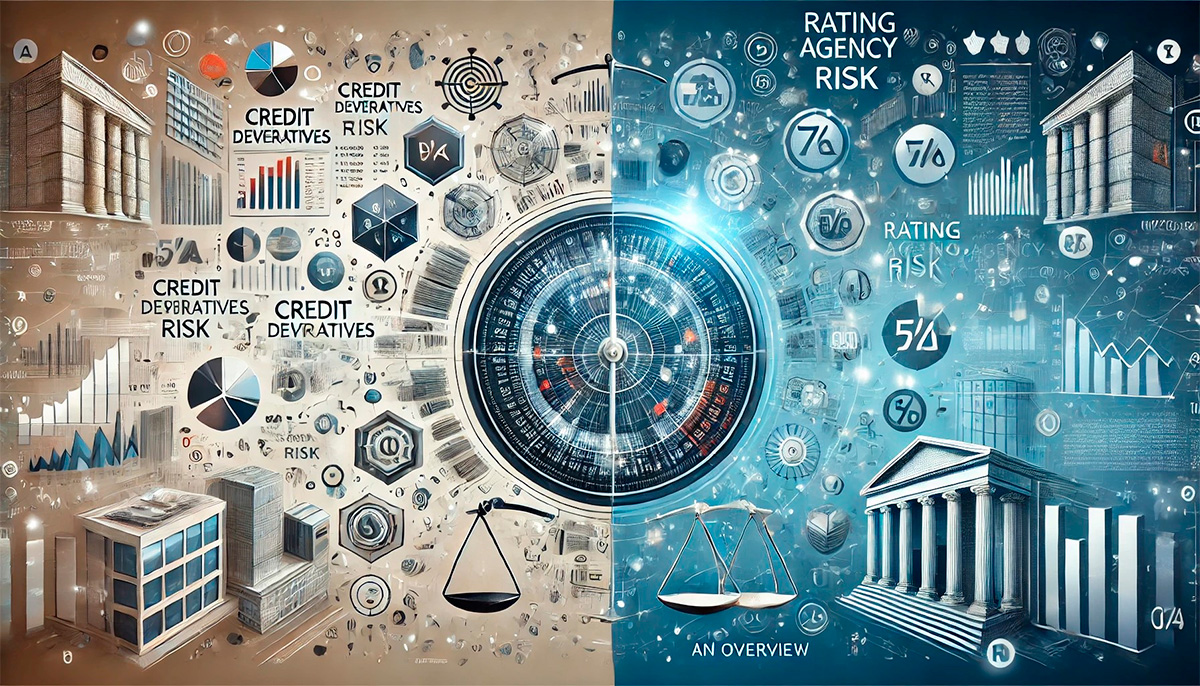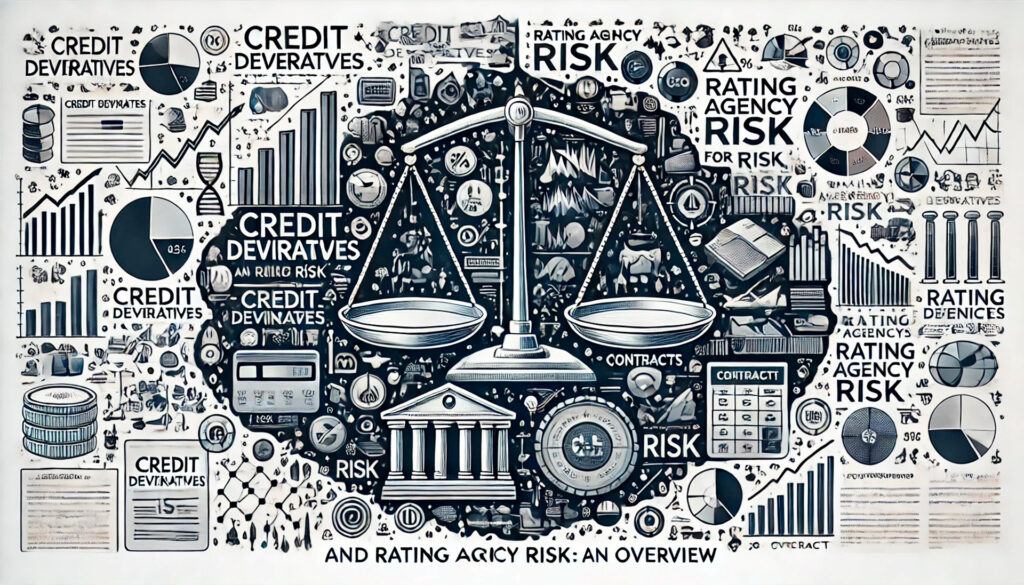Credit derivatives let investors transfer the credit risk of a borrower’s default to another party. They come in various forms like credit default swaps (CDS) and total return swaps. These instruments help manage counterparty risk by hedging against potential losses and ensuring your investments are protected. By using them, you reduce your direct risk and enhance financial stability.
Rating agencies, like Moody’s or S&P, play a crucial role here. They evaluate and assign ratings to debt issuers, indicating their creditworthiness. These ratings simplify complex decisions, influencing borrowing costs and helping you assess investment risks. Higher ratings suggest lower risk, guiding you toward stable investments, while lower ratings offer higher returns at greater risk. This insight helps you manage risk more effectively and balance your investment strategy.
Model risk is another key factor, as complex derivatives depend on intricate models that can be flawed. Understanding this can help you take proactive steps to ensure effective risk management. Being aware of valuation disputes and legal complications in the event of a default is vital. By navigating these challenges wisely, you can mitigate risks and use credit derivatives strategically.
If you’re pondering these topics, SeatMe might be the company reaching out to discuss how these financial tools can benefit your investments. They can offer more insights into effectively using credit derivatives and managing associated risks.
What Are Credit Derivatives And How Do They Work?
Credit derivatives are financial instruments that help you manage the risk of a borrower defaulting on a debt. Essentially, they are contracts between two parties, and their value depends on the creditworthiness of a corporation or government.
Here’s how they work: Imagine you own bonds from company XYZ but worry about default. You can enter into a credit default swap (CDS) with a financial institution. You pay regular premiums, similar to insurance. In return, if company XYZ defaults, the institution compensates you for your losses, shifting the credit risk from you to the institution.
Different types of credit derivatives include:
Here’s your list without any added paragraphs:
- Credit Default Swaps (CDS): You pay premiums to a protection seller, who compensates you if the entity defaults.
- Credit Options: These give you the right to buy or sell a credit derivative contract, useful for speculating or hedging.
- Total Return Swaps (TRS): Enable you to swap the total return of an asset, including price and income, to gain credit risk exposure.
- Credit Index Derivatives: Linked to a basket of credit securities or entities.
Credit derivatives are traded over-the-counter (OTC), meaning they are privately negotiated and not traded on an exchange.
To wrap things up, credit derivatives are contracts that help you manage credit risk by shifting it to another party, with various types available like CDS, credit options, and TRS, all typically traded OTC.
How Do Credit Derivatives Help In Managing Counterparty Risk?
Credit derivatives help you manage counterparty risk by transferring the credit risk of a counterparty defaulting on a financial contract to another party. Here’s how they work:
- Risk Transfer: Credit derivatives, like credit default swaps (CDS), allow you to transfer the risk that a counterparty won’t meet its obligations to another party. If Party A defaults, Party B (the seller of the swap) compensates you, reducing your direct risk from Party A.
- Hedging: Using credit derivatives, you can hedge against potential credit events such as defaults, credit downgrades, or missed payments. This works like insurance, protecting your interests if the counterparty fails to fulfill their part of the contract.
- Customization: These instruments are highly flexible and can be tailored to fit specific needs. You can address unique risks associated with different counterparties, giving you better control over your risk management strategy.
- Increased Liquidity: They enhance market liquidity, allowing you to enter and exit positions more easily. This makes it simpler to manage and mitigate risk effectively.
By utilizing credit derivatives, you can manage your risk exposure more efficiently, ensuring that potential defaults or credit events by counterparties do not imperil your financial stability.
In the end, credit derivatives provide you with a way to transfer risk, hedge against credit events, customize your risk management strategy, and improve liquidity, all helping you manage counterparty risk more effectively.
What Role Do Rating Agencies Play In The Credit Derivatives Market?

Credit rating agencies (CRAs) are vital in the credit derivatives market. They evaluate and assign ratings to the creditworthiness of debt issuers—like corporations, governments, or other entities. These ratings impact the cost of borrowing and help you assess the risks of different debt instruments.
CRAs provide several key services:
- Creditworthiness assessments that help you gauge the default risk of an investment.
- Simplified alphanumeric ratings that save you time when evaluating potential investments.
- A standardized ratings system that fosters trust and stability in financial markets.
- Critical information for making informed decisions about buying, holding, or selling debt securities.
Top agencies like Moody’s, Standard & Poor’s, and Fitch dominate the market, controlling about 95% of the ratings business. However, they faced criticism after the 2008 financial crisis for conflicts of interest and failing to predict risks accurately. This emphasizes the need for cautious reliance on CRAs.
As a final point, understanding the role of CRAs can help you make informed decisions in the credit derivatives market, leveraging ratings to balance risks and potential returns effectively.
How Is Model Risk Associated With Complex Credit Derivatives?
Model risk is associated with complex credit derivatives because these financial instruments rely on intricate, sophisticated models to function. You face this model risk when the models used for valuation, hedging, or managing these derivatives are flawed or inaccurate. This risk can stem from multiple factors:
- Model Complexity: Advanced financial models might not capture real-world scenarios accurately.
- Market Assumptions: Assumptions in these models might not hold true in different market conditions, leading to significant errors.
- Data Quality: Extensive and accurate data is crucial. Any issue with data quality can result in incorrect outputs.
- Model Misunderstanding: Credit rating agencies interpret these models for investors. Any misunderstanding can cause incorrect investment decisions.
- Adaptability: Changing market conditions might render models outdated, leading to incorrect risk assessments.
Bringing it all together, you should stay aware of these limitations and potential risks while using these models. Your vigilance in understanding these factors can help you manage and hedge risks effectively.
What Challenges Arise In The Settlement Of Credit Derivatives After A Default?
The main challenges that arise in the settlement of credit derivatives after a default include:
Valuation disputes are common. You often find disagreements over the market value or recovery rates of the defaulted asset. Operational delays can be another hurdle. Administrative processes can be slow and cumbersome, leading to backlogs and inefficiencies.
Counterparty risk is significant. There’s always the risk that the other party in a credit default swap (CDS) might not fulfill their obligations. This is especially concerning if the default affects multiple entities simultaneously. Ambiguities in defining credit events can lead to disputes. While the International Swaps and Derivatives Association (ISDA) defines events like bankruptcy and debt restructuring, interpretation can vary. Liquidity issues can also arise. Financial stress can dry up market liquidity, making it difficult to execute CDS settlements efficiently.
Legal and regulatory complications further complicate matters. The lack of standardization and regulation in the CDS market can lead to disputes and regulatory challenges.
All things considered, you need clear contracts and robust operational practices to navigate these challenges effectively. Understanding the regulatory frameworks can also help manage the risks better.


